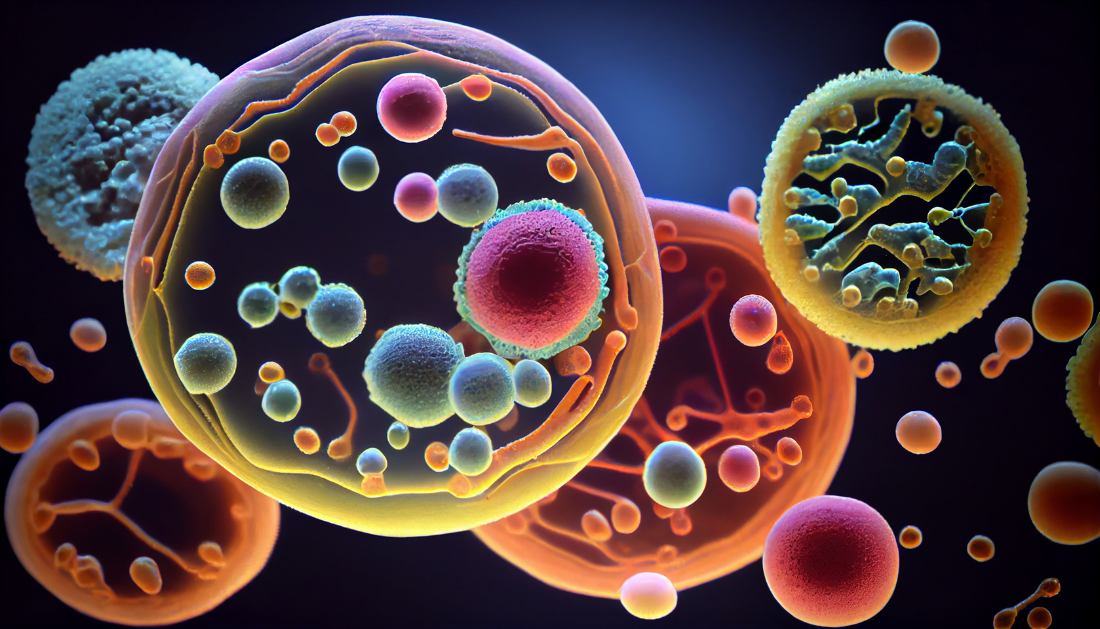

In a recent study published in the journal Nature, a group of researchers examined the intergenic haplotype present on the long arm of chromosome 21 in relation to inflammatory diseases. This haplotype is independently linked to several inflammatory diseases, including Takayasu’s arteritis, ankylosing spondylitis, inflammatory bowel disease, and primary sclerosing cholangitis. To gain a deeper understanding of the mechanisms behind these inflammatory diseases, the researchers conducted a functional genomic study.
Context
About 5% of people worldwide suffer from autoimmune and inflammatory illnesses, which are very diverse and impact different body parts. Less than 10% of the medications undergoing clinical development are approved for usage, making it difficult to treat inflammatory illnesses like psoriasis, lupus, and inflammatory bowel disease. The main reason why inflammatory illness medicines are not very effective is that we do not fully understand the mechanisms underlying inflammatory diseases.
However genetic advances and the mapping of many loci offer a way to look at the loci that are directly related to the pathophysiology of disease. Finding the mechanisms that these genetic loci implicate opens up the possibility of creating medications that precisely target these processes.
Concerning the study
The current study looked at common disease mechanisms and sought to pinpoint genetic variations that predicted a person’s susceptibility to a variety of inflammatory illnesses. They discovered the intergenic region, located on the long arm (q) of the 21st chromosome at position 22 (chr21q22), which harbors the haplotype that determines an individual’s susceptibility to five inflammatory disorders.
To see if the illness mechanism was the same for all five disorders, they performed a co-localization analysis. They postulated that the chr21q22 locus was connected to immune function because all five inflammatory disorders were immunologically mediated.
Based on the theory that the chr21q22 locus had a distal enhancer role in immunological mechanisms, the study employed chromatin immunoprecipitation-sequencing to determine the active promoters and enhancers.
To determine which gene was regulated by the enhancer at chr21q22, the researchers screened several genes that were near the chr21q22 locus using a combination of promoter-capture Hi-C and quantitative locus data on human monocyte expression.
Next, the identified gene’s causative function was verified using the CRISPR/CRISPR-associated protein 9 (Cas9) system, which clusters regularly interspaced short palindromic repeats. To achieve this, the scientists used CRISPR/Cas9 to specifically delete the enhancer region in human monocytes. Then, they cultured the modified monocytes with proinflammatory ligands like prostaglandin E2 and tumor necrosis factor, which are cytokines and lipids, respectively, as well as a toll-like receptor agonist called Pam3CSK4.
The gene that was impacted by the enhancer loss at chr21q22 was subsequently identified by measuring the messenger ribonucleic acid (mRNA) expression levels of each candidate gene. After that, information from genome-wide association research on inflammatory bowel disease was utilized to identify the enhancer’s causative variant.
It was difficult to determine the enhancer’s causative variant due to the high levels of linkage disequilibrium between a few chosen single nucleotide polymorphisms. To check for enhancer activity, a large number of short deoxyribonucleic acid (DNA) sequences were screened using a massively parallel reporter experiment.
Outcomes
The study discovered that the human inflammatory macrophage centrally regulated by the Erythroblast Transformation Specific proto-oncogene 2 (ETS2) was boosted by the intergenic region on chr21q22.
It was discovered that the genes controlled by the ETS2 protein were highly expressed in diseased tissues. Additionally, compared to other pathways, these genes had higher levels of enrichment in the inflammatory bowel disease genome-wide association research data.
Additionally, the inflammatory state seen in the five inflammatory illnesses associated with the chr21q22 locus was restored and several therapeutic targets, including interleukin 23 and tumor necrosis factor, were elevated when ETS2 was overexpressed in macrophages.
The researchers also sought to determine possible means of treating inflammatory illnesses. One of these was to stop ETS2 signaling, which can target several cytokines, by using mitogen-activated protein kinase kinase, or MEK, inhibitors. However, because MEK also functions in different ways in other tissues, this approach may have a lot of negative effects.
Thus, the researchers think that the only ways to avoid the side effects and effectively block the ETS2-based inflammation are to target the ETS2 protein directly with proteolysis-targeting chimera molecules, or PROTACs, or to deliver MEK inhibitors to macrophages specifically using antibody-drug conjugates.
In conclusion
Overall, the results showed that the intergenic region on chr21q22, which is linked to five inflammatory illnesses, boosted the expression of the ETS2 gene. Potential treatments for inflammatory illnesses include approaches that selectively block ETS2 signaling in macrophages or directly target the ETS2 protein.
For more information: A disease-associated gene desert directs macrophage inflammation through ETS2, Nature, https://doi.org/10.1038/s41586-024-07501-1
more recommended stories
 Phage Therapy Study Reveals RNA-Based Infection Control
Phage Therapy Study Reveals RNA-Based Infection ControlKey Takeaways (Quick Summary) Researchers uncovered.
 Pelvic Floor Disorders: Treatable Yet Often Ignored
Pelvic Floor Disorders: Treatable Yet Often IgnoredKey Takeaways (Quick Summary) Pelvic floor.
 Urine-Based microRNA Aging Clock Predicts Biological Age
Urine-Based microRNA Aging Clock Predicts Biological AgeKey Takeaways (Quick Summary) Researchers developed.
 Circadian Control of Neutrophils in Myocardial Infarction
Circadian Control of Neutrophils in Myocardial InfarctionKey Takeaways for HCPs Neutrophil activity.
 E-Cigarette Use and Heart Attack Risk in Former Smokers
E-Cigarette Use and Heart Attack Risk in Former SmokersKey Takeaways for Clinicians and Nurses.
 36-Week Pre-eclampsia Screening May Reduce Term Risk
36-Week Pre-eclampsia Screening May Reduce Term RiskA New Preventive Strategy for Term.
 Cardiovascular Risk and Sudden Cardiac Death in Diabetes
Cardiovascular Risk and Sudden Cardiac Death in DiabetesRising Sudden Cardiac Death (SCD) Risk.
 Poor Kidney Function and Alzheimer’s Biomarkers Explained
Poor Kidney Function and Alzheimer’s Biomarkers ExplainedPoor kidney function may influence levels.
 Walking Speed Before Hip Replacement Predicts Recovery
Walking Speed Before Hip Replacement Predicts RecoveryNew Evidence Points to a Simple,.
 Neuroblastoma Drug Combo Extends Survival in Models
Neuroblastoma Drug Combo Extends Survival in ModelsA Promising Shift in High-Risk Neuroblastoma.

Leave a Comment